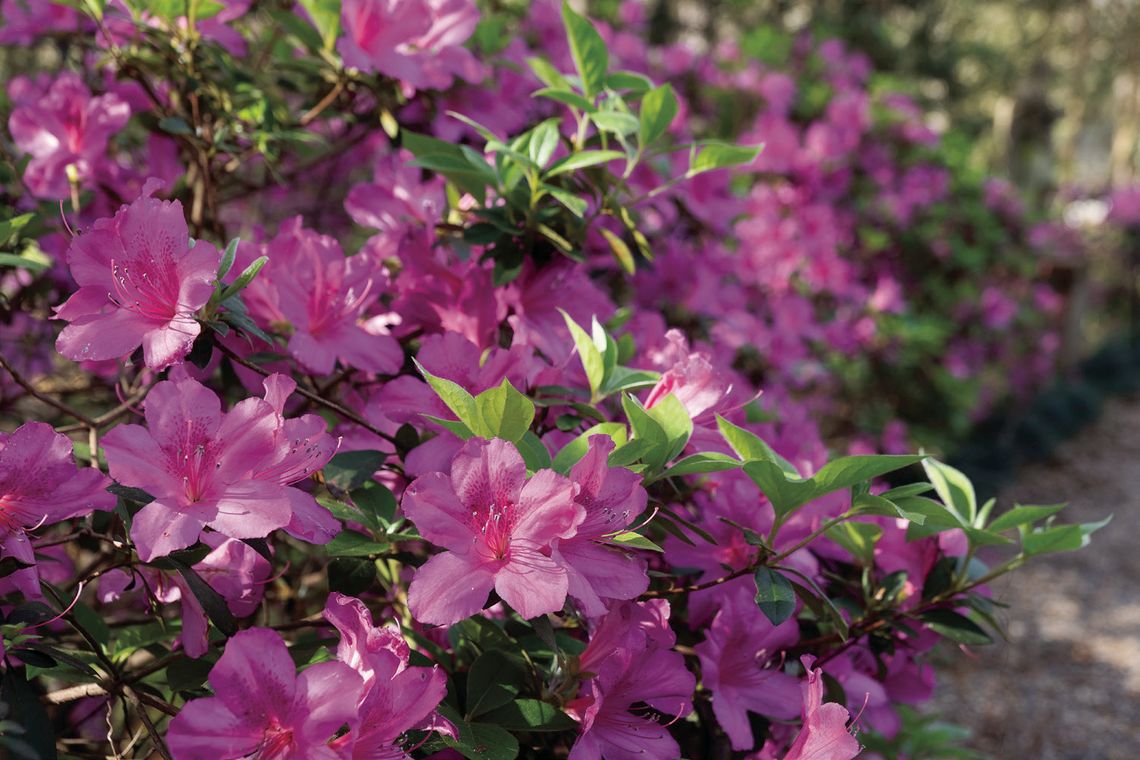Get it growing
Every year, LSU Ag-Center horticulturists select four plants to add to the Louisiana Super Plant program. Plants don’t come by this designation easily. They must prove they can be beautiful and tough in the face of Louisiana’s challenging growing conditions.
If ever there was a plant that has shown itself to be a reliable performer in Louisiana landscapes, it’s the Southern Indica azalea — one of the AgCenter’s 2025 Super Plant picks. This general group of plants is sometimes referred to as Southern Indian hybrids.
This species of azalea (Rhododendron indicum) has been a staple of Southern gardens since the 1800s, when it was introduced to the United States from its native Japan. They also can be found growing as understory plants in the woods, especially beneath pine trees.
These large evergreen shrubs are vigorous and heat tolerant. They are reliable spring bloomers with a wide range of flower colors.
You’re sure to have seen three of the most common cultivars: Lavender Formosa, which is ubiquitous in Louisiana and has vibrant purpleto- magenta blooms; George L. Taber, which displays soft pink blooms; and Mrs. G.G. Gerbing, whose pure white flowers stand out especially well in shadier areas.
Like many good things, azaleas’ stunning spring show of flowers doesn’t last long. Blooms usually begin to appear in mid-March in south Louisiana and a week or two later in the northern part of the state. Bloom times can vary depending on the cultivar and site-specific conditions, but most shrubs will spend only two weeks in full bloom.
Fortunately, there’s more to azaleas than just flowers. With their dense, evergreen foliage, azaleas provide visual interest in the garden year-round. They can reach 6 to 8 feet tall and 4 to 6 feet wide, making them a great choice for foundation plantings that give structure to the landscape. Some cultivars in the Southern Indica azalea group are a bit smaller. All sizes of azaleas are attractive in masses or used individually as specimen plantings.
Azaleas also are tough, often living for many decades, especially if they’re given all the right conditions. They’ll have the most flower power in full sun, but you can still enjoy plenty of blooms in part sun and even part shade.
While these shrubs prefer acidic soils, they’re quite adaptable and will tolerate neutral pH soils, too — as long as the area has decent drainage. Mulching with pine straw or composted pine bark will help with soil pH, and in locations with alkaline soils, adding elemental sulfur may be required every few years.
Fertilize azaleas late winter or very early spring each year before you see blooms start to emerge.
Pruning is fairly easy and doesn’t need to be done every year. When it is time to prune, however, make sure to do it as soon as the bloom cycle is over. Azaleas set the next year’s blooms in summer, so pruning too late will eliminate most flower production for the following spring.
Shearing or hedging is not recommended, as it takes away from the azalea’s natural woodland appearance.
If you’re interested in adding azaleas to your landscape this spring, try to plant them soon. While it’s best to plant shrubs in the cooler temperatures of fall and winter, you can successfully establish azaleas in the spring, too. Just don’t wait till the heat of summer, which will put too much stress on newly planted shrubs.
To learn more about Louisiana Super Plants, visit www.LSUAgCenter. com/SuperPlants.


